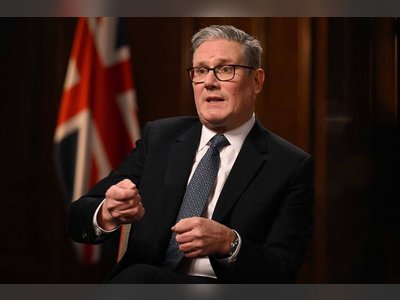US and Regional Powers Forge New Syrian Path Amidst Tenuous Alliances
Direct negotiations with Syrian rebels mark a pivotal shift as global stakeholders seek stability without Assad
In a landmark move that could redefine the geopolitical landscape of the Middle East, officials from the United States, Turkey, and several Arab nations have committed to facilitating a peaceful transitional process in Syria.
This diplomatic convergence emerged from high-stakes conferences held recently in Jordan, setting the stage for a potential resolution to Syria’s protracted conflict.
Perhaps the most significant revelation was the confirmation by US Secretary of State Antony Blinken that Washington has engaged in direct talks with the Hay'at Tahrir al-Sham (HTS), a prominent rebel faction instrumental in the past attempts to dethrone Syrian President Bashar al-Assad.
This engagement marks a strategic pivot, as Western powers aim to stabilize Syria without repeating the chaotic aftermath that plagued post-Gaddafi Libya.
Central to this diplomatic effort is the ambition to architect a broad-based government that not only acknowledges minority rights but also diligently works to prevent extremist factions from exploiting the power vacuum.
Such a government aims to harmonize disparate sects and social structures, laying foundations for a sustainable peace.
Despite the optimism shared by these collaborating nations, skepticism looms large over HTS’s capacity to genuinely integrate diverse groups, especially given its controversial history.
The group's former affiliations with extremist ideologies fuel concerns about its current and future inclusivity.
Moreover, conspicuously absent from the Jordan talks were the Syrian regime, along with key influencers Iran and Russia.
This exclusion underscores a critical chasm in dialogues, reflecting the geographical and ideological intricacies that continue to shroud Syria's path forward.
In their absence, the consensus reached may lack the potency needed to effect real change on the ground in Syria.
The task ahead extends beyond mere agreements and necessitates a cohesive international mechanism that aligns the interests of global and regional players, while simultaneously fostering union within Syria’s fragmented landscape.
The primary challenge remains to deter vested rivalries from undermining this precarious unity.
If successful, the collaborative efforts could herald a new dawn for the Syrian populace.
The architects of this initiative face the daunting task of delivering lasting freedom, societal reconstruction, and economic revitalization to a nation beleaguered by over a decade of turmoil.
As diplomacy unfolds, the world watches with bated breath, aware that Syria’s fate may well redefine international peacebuilding strategies.
This diplomatic convergence emerged from high-stakes conferences held recently in Jordan, setting the stage for a potential resolution to Syria’s protracted conflict.
Perhaps the most significant revelation was the confirmation by US Secretary of State Antony Blinken that Washington has engaged in direct talks with the Hay'at Tahrir al-Sham (HTS), a prominent rebel faction instrumental in the past attempts to dethrone Syrian President Bashar al-Assad.
This engagement marks a strategic pivot, as Western powers aim to stabilize Syria without repeating the chaotic aftermath that plagued post-Gaddafi Libya.
Central to this diplomatic effort is the ambition to architect a broad-based government that not only acknowledges minority rights but also diligently works to prevent extremist factions from exploiting the power vacuum.
Such a government aims to harmonize disparate sects and social structures, laying foundations for a sustainable peace.
Despite the optimism shared by these collaborating nations, skepticism looms large over HTS’s capacity to genuinely integrate diverse groups, especially given its controversial history.
The group's former affiliations with extremist ideologies fuel concerns about its current and future inclusivity.
Moreover, conspicuously absent from the Jordan talks were the Syrian regime, along with key influencers Iran and Russia.
This exclusion underscores a critical chasm in dialogues, reflecting the geographical and ideological intricacies that continue to shroud Syria's path forward.
In their absence, the consensus reached may lack the potency needed to effect real change on the ground in Syria.
The task ahead extends beyond mere agreements and necessitates a cohesive international mechanism that aligns the interests of global and regional players, while simultaneously fostering union within Syria’s fragmented landscape.
The primary challenge remains to deter vested rivalries from undermining this precarious unity.
If successful, the collaborative efforts could herald a new dawn for the Syrian populace.
The architects of this initiative face the daunting task of delivering lasting freedom, societal reconstruction, and economic revitalization to a nation beleaguered by over a decade of turmoil.
As diplomacy unfolds, the world watches with bated breath, aware that Syria’s fate may well redefine international peacebuilding strategies.











